Richard M J Renneboog, MS
Richard M. J. Renneboog is an independent private technical consultant and writer in both chemical and computer applications. Endeavors have included preparation of scripts for instructional and promotional video, corporate website design, curriculum development for training in advanced composites technology, and development.

Science Facts Written by Richard M J Renneboog, MS
Radon, A Rare Element
To the best of our knowledge, the entire universe is constructed from just over a hundred different types of building blocks called atoms. Each has its own characteristic properties, and while there ... Continue reading

What Is The Pythagorean Theorem?
Pythagoras was a famous Greek mathematician. He was particularly interested in the properties of triangles, and discovered a simple, fundamental relationship between the lengths of the sides of right ... Continue reading
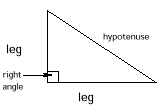
The Melting Point
Physical properties of a material fall into two categories: intrinsic properties determined by the structure of the particular molecule, and bulk properties characteristic of quantities of molecules ... Continue reading
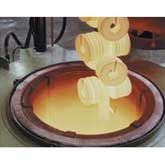
Alloys
Water is a clear colorless liquid. So is methanol. If one were to take a quantity of methanol and pour it into some water, the result is also a clear colorless liquid. But this one is something new; a ... Continue reading

How Lasers Work
Light is a fascinating thing. Or things, as the case may be. Electromagnetic energy that our eyes have developed to see, light has the same behavior and properties as all other electromagnetic ... Continue reading

Picture This
What 3 dimensional shape will pass through a rectangle, triangle and circle each time filling the whole space? The answer may surprise you in it's simplicity. Before I tell you what it is, see if you ... Continue reading

What is Oxidation?
The term 'oxidation' derives from the ancient observation of rust (oxide) formation. Early chemists could determine an increase in the weight of a metal as it apparently captured something from the ... Continue reading
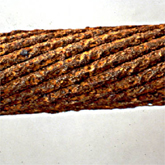
For Want Of An O-Ring
Who can forget the Challenger disaster of 1986, the culprit, a failed O-ring. But what exactly is an O-ring and how did it cause the destruction of this space shuttle? When surfaces are flat, gaskets ... Continue reading

What Are Cubes And Cube Roots?
The mathematical term 'cube' comes from the three-dimensional shape of the same name. A cube shape has three dimensions of length, width, and height, all equal and at angles of 90 to each other. Put ... Continue reading

Why Does Cement Set?
Concrete has been known for literally thousands of years. It is a testament to the enduring strength of this material that concrete structures from those long-ago times are still standing strong ... Continue reading

What Is The Periodic Table?
The periodic table of the elements is a representation of all known elements in an orderly array. The periodic law presented by Dmitri Mendeleev in 1869 stated that if the (known) elements are ... Continue reading
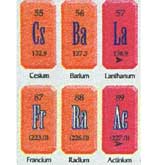
How To Calculate The Circumference Of A Circle
A circle is what you get if you take a straight line and bend it around so that its ends touch. You can demonstrate this by taking a piece of stiff wire and doing just that: bring the ends of the wire ... Continue reading

Oil Viscosity
Everybody recognizes 'oil' as a word for liquid materials that do not behave like water. They have a 'thickness' and self-cohesive character (autocohesion) that enables them to form a film on a ... Continue reading
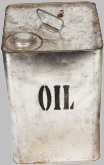
A Man-made 'Take' on Nature's Style
Advanced Composite Materials, (ACMs) are, as the name implies, composite materials. However, they consist exclusively of man-made specialty fibers bound in a matrix of plastics. The variety of such ... Continue reading
What Are Squares And Square Roots?
The mathematical term 'square' comes from the two-dimensional shape of the same name. A square shape has the two dimensions of length and width, both exactly the same and at angles of 90 to each ... Continue reading

What Is Reduction?
Long ago, in a laboratory far, far away...before the development of the atomic theory we now use, scientists believed in a principle called animism, and that the chemistry of different materials was ... Continue reading
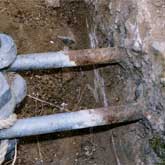
What Is pH?
Anyone who is the least bit familiar with vinegar, nausea, sodium bicarbonate, and ammonia-based cleaning solutions probably has a very good 'feel' for the different natures of acidic and basic ... Continue reading
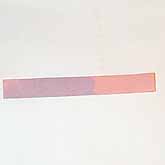
Smoke Detectors
How does a smoke detector 'know' when there is a fire? Smoke detectors use one of two different methods to do their job, and for both methods the basic operating assumption is the cliche 'where ... Continue reading

Nitrogen Gas and Compounds
Nitrogen is a very interesting element. It is the seventh element of the periodic table, with seven electrons in its atoms. The somewhat unique combination of electronic structure and small atomic ... Continue reading

What Is A Half-life?
When isotopes break down, or decay, they usually split apart into two smaller atoms. Excess neutrons and protons are often sent flying off through space, taking the excess energy of the atoms with ... Continue reading
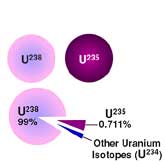
How To Calculate The Area Of A Cylinder
Understanding how to find the area of a cylinder is easy if one first visualizes the cylinder and breaks its surface down into component pieces. To do this, first take a good look at the most common ... Continue reading
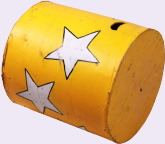
Infrared Headphones
Infrared headphones use infrared light to carry an information signal from a transmitter to a receiver. Sounds simple enough, but the actual process is very complicated. The human ear gathers sound as ... Continue reading

Uses Of Hydrocarbons
The hydrocarbons are the most broadly used organic compounds known, and are quite literally the driving force of western civilization. The greatest amounts of hydrocarbons are used as fuel for ... Continue reading
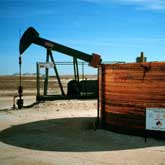
The Truth About Atomic And Hydrogen Bombs
In the 1930's Enrico Fermi and other scientists studying the properties of radioactive materials observed an interesting phenomenon. They found that the readings taken with a Geiger counter were lower ... Continue reading
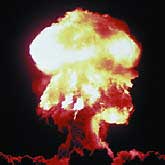
Why Doesn't Glue Get Hard In The Plastic Bottle?
Glue, in its many different forms, is a very simple-to-apply sort of thing that represents a surprisingly complex amount of chemistry and physics. On the face of it, what could be simpler? Put on the ... Continue reading

What Give Batteries Their Charge?
There is in chemistry only one function that is of fundamental importance: the ability of atoms to share electrons. In any such sharing program, there must be electron donors and electron acceptors. ... Continue reading

Pass the Basalt
Advanced composite materials technology is a field that is growing both quickly and steadily. That new fiber materials and applications will be developed is the proverbial 'no brainer'. However, ... Continue reading
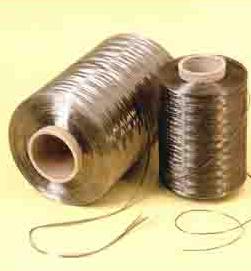
Fiber Optics
The sun is shining; it's a brilliant day. The springboard flexes powerfully under your feet as you launch into a graceful arc through the air and into the crystal clear water below. Arms extended, you ... Continue reading

How To Calculate The Area Of A Right Cone
The cone is another three-dimensional shape based on the circle. You could think of it as the cross between a circle and a right triangle. Its properties will have features of both shapes, and this ... Continue reading

Chemical Burning
Chemical burns are the result of very normal reactions that can occur between the offending material and living tissue components. People generally tend to regard their bodies as things outside of the ... Continue reading
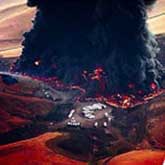
Galileo Thermometers
Every substance has the property of 'mass', which is the basic physical presence of matter. Matter occupies space. A physical mass contained within a physical space produces the physical property of ... Continue reading

Red Dot Replacing Cross Hairs
A bullet fired from a gun becomes subject to the pull of gravity and begins to fall the instant it leaves the gun barrel. The farther away from the gun the bullet travels, the lower to the ground it ... Continue reading

What Are Composite Materials?
A composite material is one in which two or more separate materials have been combined to make a single construct having more desirable properties. What many people don't realize is that composites ... Continue reading

GPS (Global Positioning System)
The GPS, or Global Positioning System, is the high-tech application of one of the most fundamental principles of geometry. Surveyors routinely use geometry and triangulation to map and lay out areas ... Continue reading

Catalysts
Chemical reactions are interactions between atoms and molecules that result in a change in their relative arrangements and interconnections. The reaction affects only individual atoms and molecules, ... Continue reading
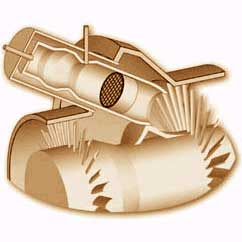
When Chlorine Met Sodium...
Sodium is a required element in human physiology. The eleventh element in the periodic table, sodium is a soft, silvery white metal that can be easily cut through with a paring knife. It is highly ... Continue reading

Inkjet Printers
At the heart of every inkjet printer, whether it is a color printer or just B&W, there is an ink cartridge that gets shuttled back and forth across the page, leaving a trail of letters or colors. Upon ... Continue reading

How Can A Bullet-proof Vest Stop A Bullet?
Here's an experiment: take the small coil springs from a dozen or so retractable pens and roll them together in a heap until they are thoroughly tangled and entwined. Now try to pull them apart from ... Continue reading

Don't Blow A Gasket!
Don't blow a gasket! Who hasn't heard this old adage at some time? What does it actually mean, and for that matter, what is a gasket? Gaskets are simple structures used to fill in and seal the spaces ... Continue reading

What Are Isotopes?
Many of the known elements from which our universe is constructed exist in various isotopic forms. The identity of any particular element is defined by the number of protons within the nuclei of its ... Continue reading
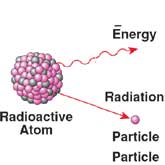
What Is A Mole?
No, it's not the furry little burrowing rodent with the star-shaped nose, from 'Wind In The Willows'... In chemistry, a mole is strictly defined as the number of particles of a pure material equal to ... Continue reading

Seeing In The Dark
In the movies, there are all sorts of nasty things that can see perfectly well in the dark. More realistic movies also boast their share of 'beasts' that can see in the dark. Who could forget the ... Continue reading

Fire Retardant Gels
Ultra-absorbent diapers, the kind that will hold massive amounts of liquids, have been used for years, without a second thought given to the materials within them. Let's face it; those materials ... Continue reading

Carbon Dating
As isotopes break down, or decay they give off radiation. Materials that decompose in this way are said to have a 'half-life'. As the quantity of material present decreases, so does the actual rate at ... Continue reading

How To Calculate The Volume Of A Right Cone
Cones are used every day for a variety of purposes. Perhaps the most useful application of the cone shape is as a funnel. For finding the volume, a cone is best viewed as a stack of circles, each one ... Continue reading

Airbags
An automobile airbag is a safety device: its sole purpose is to prevent an occupant of the vehicle from impacting with the surrounding structure. Typically, in a collision, Newton's laws of motion ... Continue reading

Table Salt - It's All In The Ions
All elements are defined by their individual atoms, which are in turn identified by the number of protons in the nucleus of each atom. Since protons are carriers of positive electrical charge, there ... Continue reading
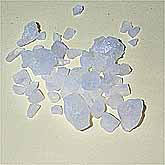
How To Calculate The Area Of A Circle
A circle is the round counterpart of a square. To find the area of a square, one multiplies the length by the width. A circle doesn't have these, however, so there has to be a different way to ... Continue reading

How To Calculate The Volume Of A Cylinder
Calculating the volume of a cylinder is even easier than calculating its area. All you have to do is recognize that a cylinder is no more than just a bunch of circles stacked to a certain height, just ... Continue reading

Fission and Fusion
In the nuclear fission process, a heavy atomic nucleus spontaneously splits apart, releasing energy and an energetic particle, and forms two smaller atomic nuclei. While this is a normal, natural ... Continue reading
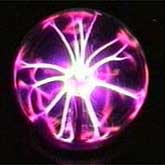
Exploding Fertilizer
Atmospheric nitrogen is a diatomic molecule of just two nitrogen atoms bonded very strongly to each other. Nitrogen, in compound with other elements, is just a single nitrogen atom bonded very weakly, ... Continue reading

